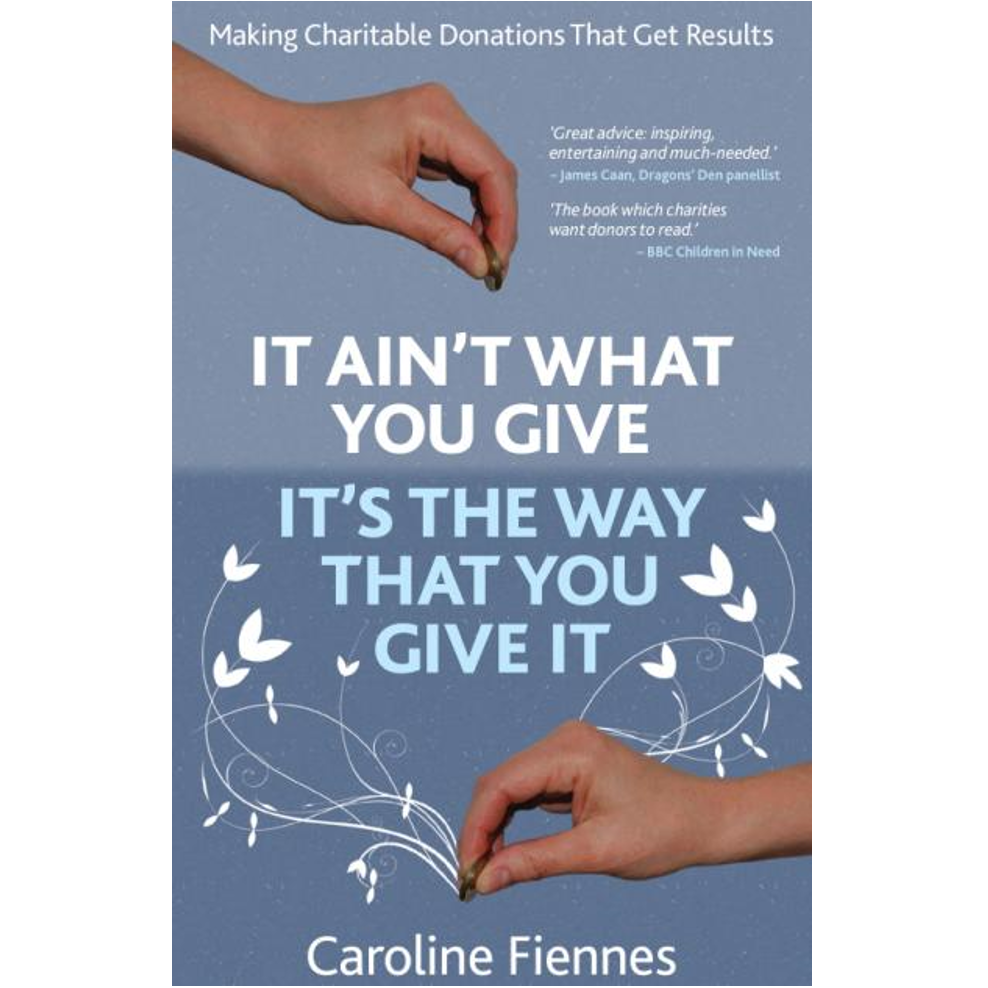This article first published in Charity Finance magazine. A PDF copy is here.
Esmee Fairbairn Foundation released a report about its experience of providing core funding. Entitled Insights on Core Funding, one of its aims is to “provide the organisations doing the work [with] the ammunition to continue to make the case for what they need to thrive” – in other words, to encourage other funders (and presumably also non-institutional donors such as wealthy individuals) to give better.
This joins many other reports and documents that have made that case – including my own book, It Ain’t What You Give, It’s The Way That You Give It and the 2009 Institute of Philanthropy report Supportive to the Core: Why Unrestricted Funding Matters. Yet, if we are really to reduce the harmful practice of restricted funding, we need to be more sophisticated than simply producing reports about not doing it. Reducing restricted funding involves an exercise in behaviour change, and we should treat it as such.
First, we need to understand precisely where the problem is if we are to pick the battles within it that we are most likely to win. For example, in which types of funders is restricted funding most prevalent? Second, we need to understand what benefits donors perceive it brings them, and what could offset those benefits. Third, we need to know why it happens: where do donors even get the notion from, and what encourages that behaviour? And fourth, what messages, communications channels and influencers are most likely to change the behaviour?
I’ve been in philanthropy a long time, and have also worked in commercial marketing and communications. I have often seen the “restricted funding” problem described, and the theory of change of most reports about restricted funding seems to be that if donors only knew that grantees disliked it, or had some examples of funders that give without restrictions, they would not do it.
But maybe that is not true – it certainly looks untrue, given that the behaviour persists despite all the reports. Maybe the “campaign for unrestricted funding” (if it can be called that) should be more strategic about its approach. I do not have all the answers, but I do have some relevant insights and experiences.
Where is the problem?
Who gives with restrictions, or the most damaging restrictions? Is it individuals, endowed foundations, listed companies, private companies or families? New or established donors? What is the geographical pattern? I do not know the answers and, having never seen any analysis, suspect nobody else does either. The “campaign” should find out so it knows who to target.
What benefit do restrictions bring to the funder?
For example, perhaps the “offending funders” care about efficiency. In that case, we could usefully (and pretty simply) assess the costs that restrictions create, such as the finance people needing to keep track of umpteen separate revenue streams. (Fiona Ellis, then director of the Northern Rock Foundation, once said of restricted funding that “grantees pretend to use it as we’ve said, and we pretend to believe them”.) That assessment of financial inefficiency might persuade some donors; we could use it best if we know precisely who we are targeting.
Or perhaps offending funders are interested in effectiveness. Again, we could investigate empirically the effect of restrictions on that. Consider back to-work programmes, for instance. Do they get fewer people into work if their funding is restricted than if it is unrestricted? One could, in principle, set up a randomised controlled trial to find out. Identifying when and how particular beneficiary outcomes are harmed by a specific donor practice might be more compelling than general exhortations and examples.
Why do donors impose restrictions?
I’ve seen various hypotheses on this, but no real data. Maybe donors impose restrictions for some reason that none of us knows.
We should ask them. Now, we should be careful here because simply asking people why they do something gives some insight but may not reveal precisely why they do it. This is true of all market research. We should also use other research methods to answer this question, such as empirical tests.
Perhaps restrictions give funders a sense of control, just as some people say that all those pointless annual reports which charities have to submit give funders’ staff something to do. Sometimes funding must be restricted because the donor is subject to limits; for example, it can support only UK work and the grantee is international. Other times, the funder is trying to avoid funding part of the grantee’s work which it believes to be much less effective. The International development NGO Evidence Action is in this category: its programme on water purification seems to be highly effective, but its work treating intestinal worms in children is extremely contentious.
A tension between giving ‘well’ and inspiring donors
In my work advising donors and funders of many types, I see a tension. On the one hand is the pull to give unrestricted funding to empower the organisation and give it flexibility. On the other is that donors – particularly private individuals for whom giving is not their job – want or need a picture in their heads of “what we are paying for”.
The latter seems reasonable – and it doesn’t matter if it does not, since perhaps having such a mental picture spurs such donors to keep giving. You could frame that mental picture as showing “what is happening that wouldn’t happen without our money”. Unrestricted funding does not create a good mental picture – at least not for large charities. If you give £100,000 unrestricted to Oxfam, whose budget is £427m, you have no idea what precise difference you are making whereas, if your £100,000 is for, say, Oxfam’s work (I’m making this up for purposes of illustration) training farmers in Malawi on technology that improves their yields, then you do. It is easier to remember and more energising – more “talkable” as marketers say.
This tension is obviously related to attribution: unrestricted funding does not allow for easy impact reporting (in multi-intervention organisations) because you cannot say what difference was attributable to that funding. This does not seem a genuine problem to me. It is the tail wagging the dog; if reporting on impact is encouraging behaviour that reduces impact, then the reporting should go. But energising donors is a real problem.
I have come to handle this tension in the following way: this solution may not be perfect and I am open to suggestions. I advise donors to make their funds unrestricted, but earmark them for a purpose. It is normally the charity that states this purpose, rather than it being imposed. They have the right to change the purpose as they see fit, but we ask that they let us know as soon as reasonably possible.
Where do donors get the idea of restrictions?
We should understand where new donors encounter the notion of restricting their funds. Remember that this does not exist in the private or public sectors: you cannot stipulate how the government uses your income tax revenue, nor how a company uses the funds when you buy its new shares. One new major donor discovered that restrictions even existed only when they read my book: “Seriously? Some donors tell charities what do to? That’s incredible. What does the donor know? It’s the charity doing all the work. How would I [as an expert in something unrelated] know what the charity should do?”
Here, then, is a good clue for a behaviour change strategy. Donors learn this behaviour from foundations – and other donors and their philanthropy advisers, lawyers and bankers. Perhaps the “campaign” should target them.
Donors see large funders applying restrictions. Worse, some large funders encourage it. Esmée reports that grantees receiving core funding “unlocked” more money than those getting project funding. The whole notion of “core funding” – that “core” is somehow separate from “real” work and is optional – is madness. It is attractive to fund just the bit of the race where the cyclist gets over the line, and not the months of preparation, but it is a fantasy that the former can be detached from the latter.
Esmée’s report even quotes a charity saying so: “The term ‘core funding’ creates an  artificial distinction that is sometimes unhelpful. There shouldn’t be a sense that some activities are optional or nice to have.”
artificial distinction that is sometimes unhelpful. There shouldn’t be a sense that some activities are optional or nice to have.”
If organisations like Esmée Fairbairn really want to discourage others from doing it, they should perhaps eliminate it in their own practice.
Identifying communications channels and messages and messengers
This is essential to influence offending donors, and we need to first identify who these donors are – although we can guess some messages and messengers already.
All this will show whose behaviour the “campaign to reduce restricted funding” needs to influence, what drives them and the levers available. From that, we can build a proper strategy. It will take some serious work and sophistication but, given that “business as usual” reports and exhortations are manifestly not working, it’s about time.

